Did you know that two powerful muscles in your body—the psoas and diaphragm—are secretly connected? This link influences everything from your posture to your breathing. When one gets tight or out of balance, it can lead to discomfort, poor posture, and even pain.
Understanding how these muscles work together through the psoas diaphragm connection could be the key to better movement, pain relief, and overall body health.
Psoas & Diaphragm Exercises
1. Diaphragmatic Breathing
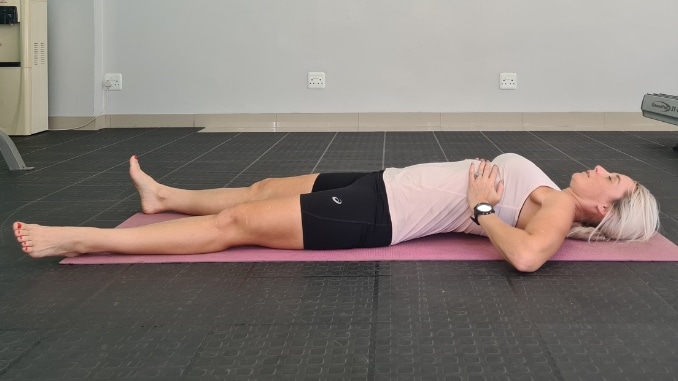
- Lie on your back with your knees bent, feet flat on the floor, and one hand on your chest and the other on your abdomen.
- Tuck your tailbone and place one hand on your chest and the opposite over your belly.
- Shift your heels to point your toes inward and let your knees fall inward.
- Lastly, hold this position for several deep belly breaths, in through your nose and out through your mouth.
- Relax and then return to the starting position.
2. Lunges
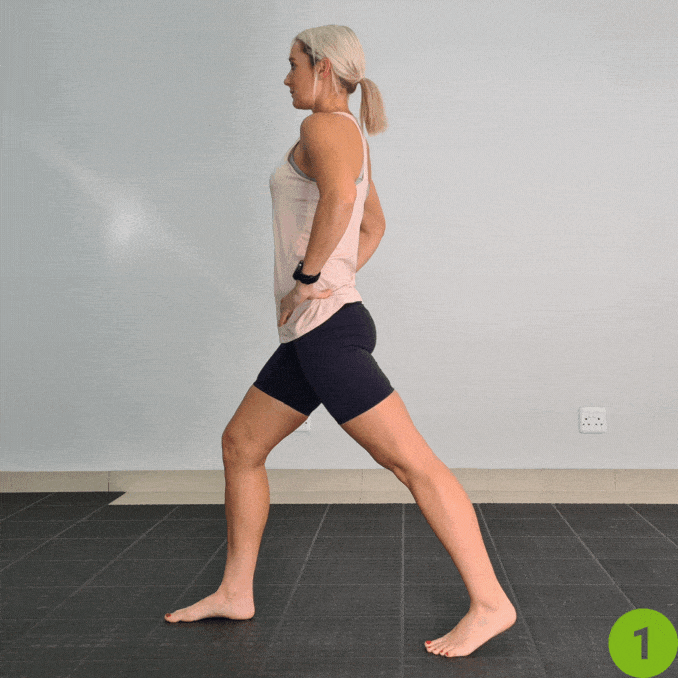
- Begin in an upright standing position, while maintaining good alignment with your head, shoulders, and hips.
- Step one foot forward and lower your hips until both knees are bent at about a 90-degree angle, with your back knee resting on the floor.
- Place your hands on your hips or your front thigh for support.
- Hold this position for several deep belly breaths, in through your nose and then out through your mouth.
- Push back to the starting position and then repeat the movement 10-15 times on each leg.
3. Cat-Cow Stretch

- Begin in a 4-point position with your hands beneath your shoulders and your knees under your hips.
- Inhale and contract your abdominal area.
- Exhale and slowly round out your mid-back as you drop your head downward.
- Then alternate by inhaling as you slowly lift your head and arch your mid-back.
- Repeat the movement, alternating directions.
4. Pigeon Pose

- Move into a straight-arm plank position, while maintaining good alignment with your head, shoulders, hips, and toes.
- Bend one leg in front of your body, bringing your knee up to your elbow and your ankle against your hip on the opposite shoulder.
- Slowly walk your hands out before you, bringing your upper body to rest over your bent knee and your head facing the floor.
- Hold this position for 30-60 seconds to allow for deeper muscle relaxation.
- Take several deep belly breaths, in through your nose and then out through your mouth.
- Raise yourself back up to return to the starting position and then repeat the movement on the opposite side.
5. Bridge Pose

- Lie on your back on the floor with your knees bent and feet flat on the floor.
- Raise both hands towards the ceiling.
- Contract your core and then press through your heels to lift your hips towards the ceiling, forming a straight line from your knees to your shoulders.
- Hold the position briefly, then slowly lower your hips back to the starting position.
6. Knee-to-Chest Stretch
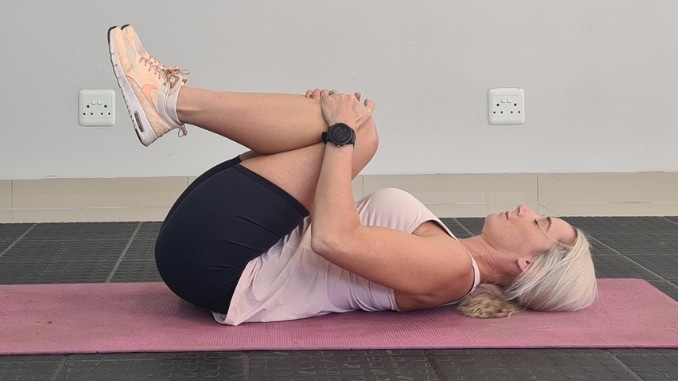
- Lie on your back with your knees bent and your feet flat on the floor.
- Raise both legs, holding your lower leg with both hands.
- Pull your knee closer to your chest to intensify the stretch.
- Hold the position for several deep belly breaths, in through your nose and then out through your mouth.
- Relax, return to the starting position, and then repeat the movement on the opposite side.
7. Seated Forward Fold
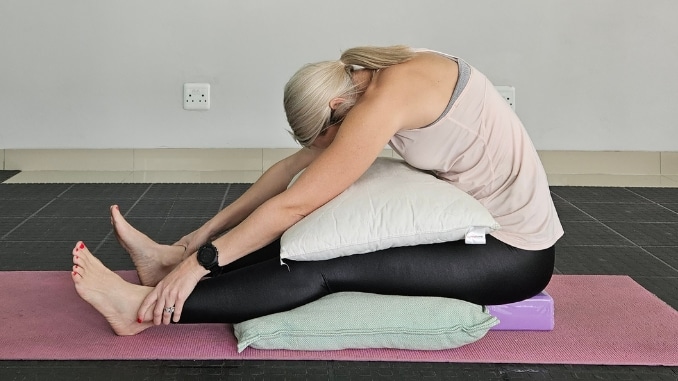
- Begin in an upright sitting position on a pillow with your legs extended in front and your toes facing upwards, while maintaining good alignment with your head, shoulders, and hips.
- Place a pillow on top of your upper legs.
- Engage your core and hinge through your hips to bend your upper body forward, placing your forehead on top of the pillow while your hands are extended and holding your ankles.
- Then, hold the position for several deep belly breaths, in through your nose and out through your mouth.
All about Psoas Muscle
- The psoas major (PM) is part of the iliopsoas muscle group, along with the iliacus and sometimes the psoas minor.
- It starts from the lateral sides of the lumbar vertebrae and discs, and the transverse processes.
- The psoas muscle [1] originates from the transverse processes, lateral sides of the vertebral bodies, and intervertebral discs of T12 to L5, and inserts at the lesser trochanter of the femur.
Functions of the Psoas Muscle:

Psoas is the walking muscle.
- Flexes the lumbar spine (lower back): It helps bend the spine forward and laterally (sideways).
- Flexes the hip: It helps lift the femur and rotate it slightly outwards.
- Stabilizes the spine: If the hips are fixed, the psoas helps stabilize the lumbar spine and pelvis.
Functions of a Diaphragm
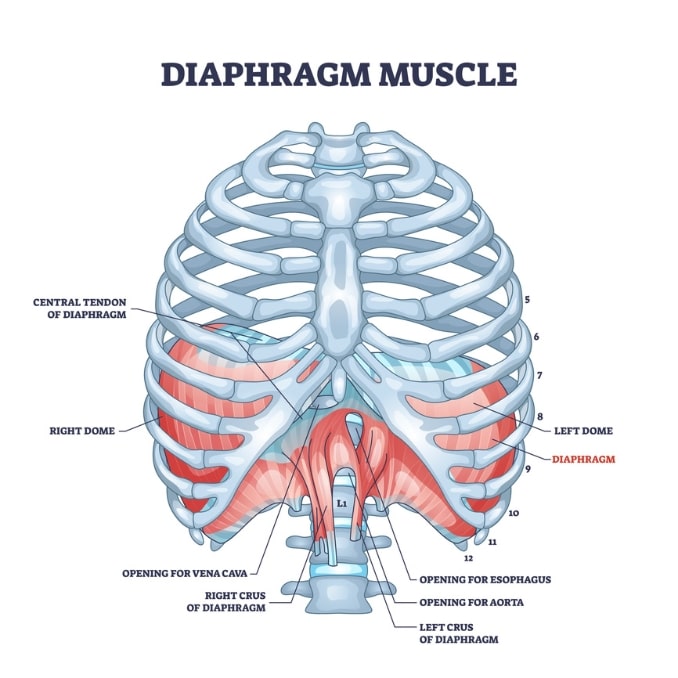
Diaphragm is the breathing muscle.
- The diaphragm is the most important muscle for breathing.
- It helps in other body processes like expectoration, vomiting, swallowing, urination, and defecation.
- It also helps with venous and lymphatic return (blood and lymph flow), supporting organs above and below it.
- It is crucial for maintaining posture [2] and helps in body position changes.
How the Psoas and Diaphragm are Connected:
- The psoas (a muscle in your lower back and hips) and the diaphragm (the muscle that helps you breathe) are connected through a piece of tissue called fascia, a link often referred to as the psoas diaphragm connection.
- The diaphragm’s muscles attach to your spine and overlap with the psoas, almost like they’re linked together.
- These muscles also help support and stabilize your spine, pelvis, and core through the psoas diaphragm connection.
Why It Matters
A tight or dysfunctional psoas [3] can alter lumbar alignment, increasing tension on the diaphragm and restricting effective breathing patterns.
Additionally, according to Dr. Anthony Lombardi, a tight psoas can cause it to jam into the pelvic brim, restricting movement and affecting the function of nearby muscles.
Because both muscles are part of the body’s core system, if one isn’t working properly, it can impact your balance and stability.
The psoas acts like a support bar for your spine, making it super important for spine health and overall core strength.
The Impact of Stress on Movement
- The sympathetic nervous system triggers the fight or flight response during stress, affecting muscles and breathing patterns.
- Chronic stress activates the sympathetic nervous system, leading to muscle tension, altered breathing patterns, and also increased strain on the psoas and diaphragm.
- Daily practice of breathing and breath awareness can help manage stress and reduce pain, highlighting the importance of diaphragmatic breathing.
- The impact of stress on movement patterns and the psoas muscle is significant, with implications for overall health and well-being.
- The connection between stress, breathing, and movement highlights the need for a holistic approach to maintaining a healthy and balanced body.
Conclusion
Understanding the connection between the psoas and diaphragm muscles is crucial for maintaining good posture, movement, and overall health. These muscles are linked through fascia and work together to support the spine, pelvis, and core.
When either the psoas or diaphragm is not functioning properly, it can affect balance, stability, and even breathing patterns.
Stress can further impact these muscles, leading to discomfort and poor movement patterns. Regular exercises like diaphragmatic breathing, lunges, and stretches can help improve the flexibility and function of these muscles, reducing stress and promoting a balanced, healthy body.
By caring for these muscles and their connection, we can enhance our movement, posture, and overall well-being
Are tight hips holding you back? Experience the freedom of improved flexibility and reduced discomfort with our proven program, Unlock Your Hip Flexors. Join countless others who have reclaimed their range of motion and enhanced their daily life. Check out now!
Frequently Asked Questions
How does a tight psoas affect the diaphragm?
A tight psoas muscle can significantly affect the diaphragm due to their close anatomical connection. The psoas, along with the iliacus muscle, forms the iliopsoas muscle, which is linked to the thoracic diaphragm through the transverse processes of the lumbar vertebrae. When the psoas is tight, it can pull on the lumbar spine, affecting the diaphragm’s ability to expand fully during breathing, leading to restricted lung capacity and shallow breathing.
Can tight psoas cause breathing issues?
Yes, a tight psoas can cause breathing issues. Since the psoas is connected to the lumbar spine and the abdominal wall, its tension can increase intra-abdominal pressure, impacting the pelvic floor and making it harder for the diaphragm to move effectively. This can trigger a compensatory pattern in the body that disrupts proper breathing mechanics.
What is the psoas muscle connected to?
The psoas muscle is connected to the lumbar vertebrae, the thigh bone, and the iliacus muscle. Its connection to the thoracic diaphragm also links it to the central nervous system through the vagus nerve, affecting both posture and movement.


